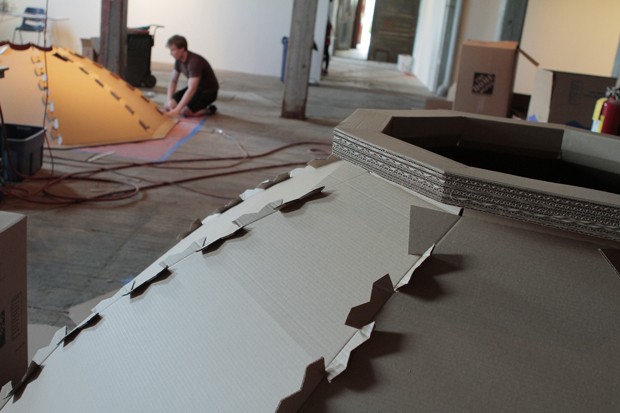WHAT: What Remains WHEN: Saturday, June 5, 7 p.m. âÄì 11 p.m., runs until July 25 WHERE: The Soap Factory, 514 2nd St. SE, Mpls. âÄúArt is never finished.âÄù ItâÄôs an old adage that art teachers like to tell bored teenagers hard at work on oil portraits of their dogs or prom dates. But how much truth does it hold? To the Soap Factory, the opposite is true. As executive director Ben Heywood put it, âÄúYou can almost define art as whatâÄôs left when someone finishes working.âÄù The reformed factory explores this idea in their next exhibit, âÄúWhat Remains.âÄù The selection of art was chosen from more than 500 general submissions that the gallery received, which was then whittled down to just a few pieces that compliment the Soap FactoryâÄôs sprawling, industrial space. Because of its vast size and unusual structure, the Soap Factory lends itself best to installation art, which comes off of the wall and interacts with the space by means of complex, bizarre and otherworldly structures. Although the gallery didnâÄôt set out to have a theme for this exhibit, the pieces in âÄúWhat RemainsâÄù examine organic and man-made geography to see how structures change over time. Korean-born and New York-residing artist Hong Seon JangâÄôs work uses found objects and throw-away materials to explore both human environments and nature. Tape on chalkboards, waves made out of intricately cut National Geographic magazines and tubes bleeding a milk-like substance make up his portfolio, all of them eery and larger-than-life. For âÄúWhat Remains,âÄù Jang will exhibit his project entitled âÄúZip City,âÄù a play on words that explores the boundaries of zip codes using only one material: zip ties. Creating the sculpture took Jang six months of 10-hour days, and consumed between 20,000 and 100,000 zip ties, the artist estimated. âÄúI try to create in a way that gives these ordinary materials new meanings and aesthetic possibility,âÄù Jang explained, adding that he wants to explore âÄúthe eastern philosophy of circulatory life systems as a continuous system of connections.âÄù Also exploring human geography is St. Olaf fine arts graduate Margaret Pezalla-Granlund. Pezalla-Granlund moved to California to earn her masters, where she took up the hobby of photographing landscape structures and turning them into three-dimensional models. âÄúWhen I was living in California I got really interested in the landscape because there they spend so much time and energy trying to make it look different,âÄù she said. Other highlights include diaries, âÄúa living mazeâÄù and a candy chandelier by East Coast sculptor Kathleen Griffin. Heywood explained that the exhibition of such complex installation art from so many non-local artists could not be done without the work of its volunteers. After receiving instructions from the artists, the volunteers spent hours putting many of the pieces together, pulling zip ties and cutting out cardboard. âÄúFew galleries of our financial size do that,âÄù Heywood explained. âÄúItâÄôs one reason that you donâÄôt see this kind of work with younger emerging artists. ItâÄôs hard for them to fabricate this work without assistant help .âÄù The remaining impressions after this exhibit will influence not only a new generation of hopeful future artists volunteering their hours, but also our understanding of the spaces around us.

Wil Natzel makes domes out of cardboard and hot glue which will be suspended at varying heights above the ground by tentacles Monday at the Soap Factory.
What Remains: Candy chandeliers and zip tie cities
Both local and international artists exhibit in the Soap Factory’s showcase of its best submissions this year.
by Rebecca Lang
Published June 2, 2010
0
More to Discover







